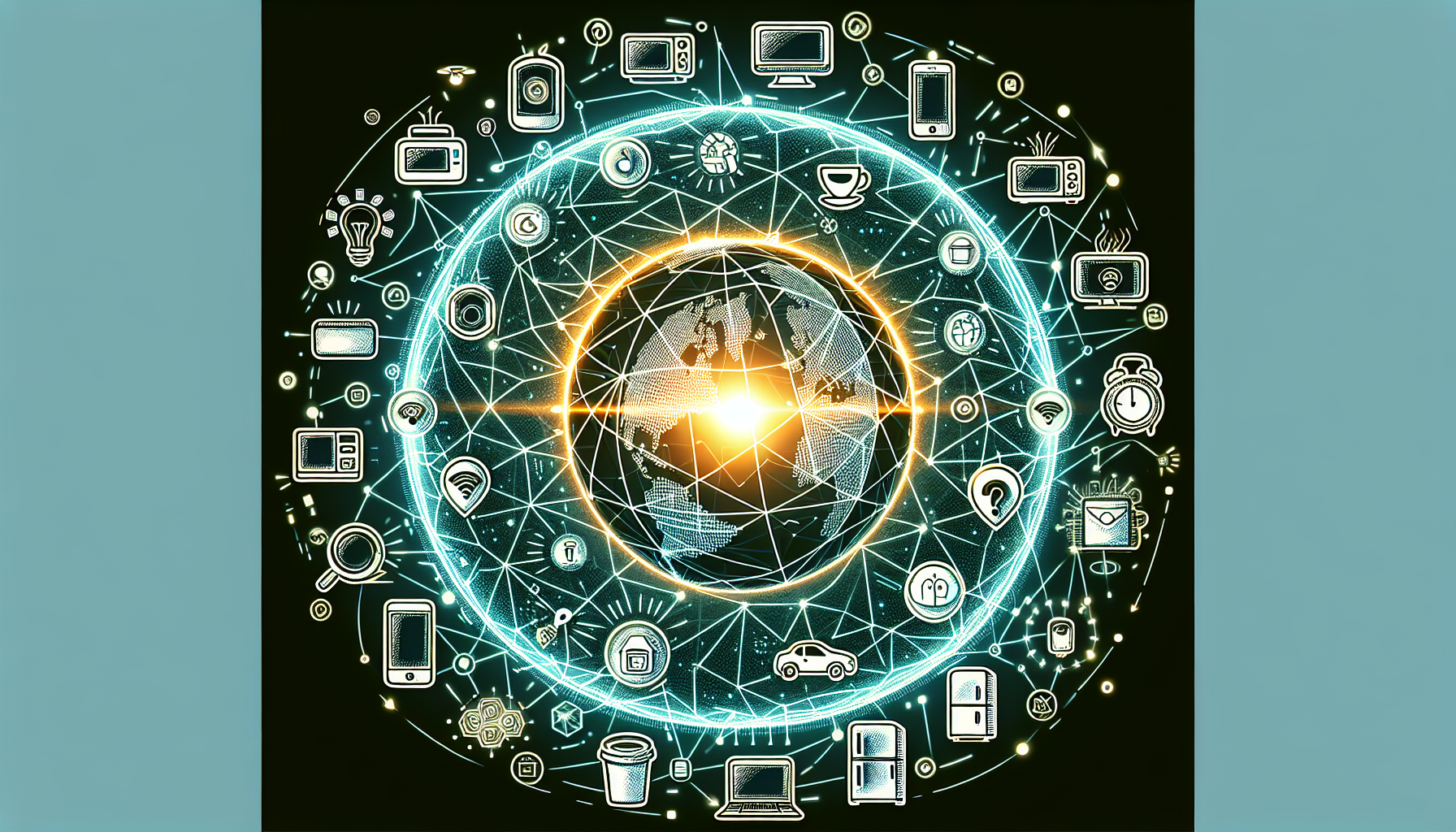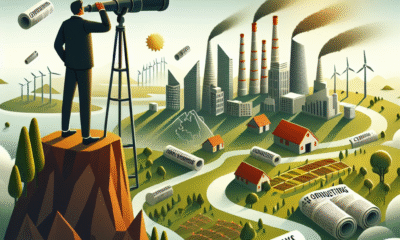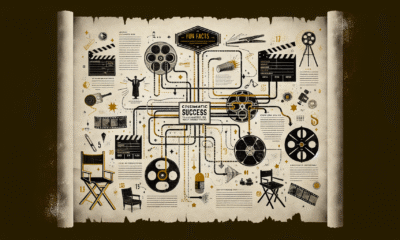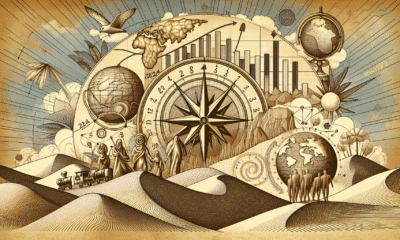Tech
Understanding the Internet of Things (IoT): A Comprehensive Overview

The Internet of Things: Why It’s the Future You’ve Been Waiting For
Ever wondered how your coffee maker knows exactly when you want your morning brew? Or how your smart thermostat adjusts the temperature before you even walk in the door? Welcome to the Internet of Things (IoT), where everyday devices are getting a major tech upgrade, making our lives not just easier but also more connected. If you’re curious about the sheer scope of this technology, you’ve come to the right place. Let’s dive in!
What Is the Internet of Things?
The Internet of Things is essentially a network of physical devices equipped with sensors, software, and other technologies that connect and exchange data over the internet. Think of it like this: every time your washing machine sends you a notification about a completed cycle, it’s part of the IoT. This seamless communication between devices opens up a whole new world of possibilities.
Why Does IoT Matter?
Many people ask, “Why should I care?” Here’s the lowdown:
- Efficiency: Smart devices can help streamline tasks, conserving time and energy.
- Data Collection: IoT devices gather valuable data that can be used to improve products and services.
- Convenience: Automate mundane tasks and control devices with just your smartphone or voice.
How Does IoT Work?
At its core, IoT relies on three main components:
-
Devices/Sensors: These are the physical gadgets equipped with sensors that collect data. Common examples include:
- Smart refrigerators that monitor food freshness.
- Fitness trackers that record activity levels.
-
Connectivity: IoT devices connect to the internet through Wi-Fi, Bluetooth, or cellular networks, enabling them to send and receive data.
-
Data Processing: Once the data is collected, it’s processed either on the device itself or in the cloud, allowing users to gain insights or control their devices.
Real-Life Applications of IoT
IoT isn’t just some futuristic concept; it’s being used in a variety of practical ways today:
Smart Homes
Imagine living in a house where the lights turn on as you enter, the coffee brews at your preferred time, and the thermostat adjusts based on the season—all thanks to IoT!
- Smart lighting systems let you control your home’s ambiance from your smartphone.
- Smart security systems alert you about unusual activity, keeping your home safe.
Healthcare
The healthcare sector is being transformed by IoT. Wearable devices like smartwatches can monitor heart rates and alert users and their doctors about any irregularities. Remote patient monitoring tools are also making it easier to manage chronic conditions from home.
- Telemedicine: Patients can consult doctors via apps, reducing the need for in-person visits.
- Wearable health tech: Devices that help people track their health metrics.
Agriculture
Farmers are using IoT to monitor soil conditions, weather forecasts, and crop health, leading to better yield and reduced waste.
- Precision farming: Using sensors to optimize resource usage, from water to fertilizers.
Challenges Facing IoT
While IoT is a game-changer, it’s not without its challenges. Here are a few issues to consider:
- Security: The more connected we are, the more vulnerable we can become to cyber-attacks. Hackers can exploit weak points in IoT devices to gain unauthorized access.
- Interoperability: Different devices often don’t communicate well with each other, creating compatibility issues.
- Data Privacy: With devices collecting more personal data, concerns about who owns and uses that data become increasingly important.
The Future of IoT: What’s Next?
So, what lies ahead? Experts predict that IoT will only continue to grow, with a projected 75.44 billion devices expected to be connected by 2025, according to a report by Statista. Here are some trends to watch:
- 5G Connectivity: Faster internet speeds will enable even more devices to connect and communicate instantaneously.
- AI Integration: Artificial intelligence will enhance IoT’s capability to analyze data and automate processes efficiently.
How to Get Started with IoT
Want to dive into the world of IoT? Here are some steps you can take:
- Start Small: Begin with smart home devices like smart bulbs, speakers, or thermostats.
- Educate Yourself: Read up on IoT technologies and their applications. Resources like Pew Research offer valuable insights into current trends in technology.
- Stay Informed: Keep an eye on emerging technologies that can integrate into your lifestyle seamlessly.
Conclusion
The Internet of Things is more than a buzzword; it’s an exciting field that’s reshaping how we interact with the world around us. From smart homes and healthcare to agriculture and beyond, the applications are limitless. Although challenges like security and data privacy exist, the benefits far outweigh the downsides, making it a central part of our tech-driven future.
Curious for more? Check out our articles on Smart Home Trends and Wearable Technology to see how else technology is changing our lives!
In the end, whether you’re a tech novice or a seasoned expert, understanding IoT will help you navigate our increasingly connected world. So, what are you waiting for? Embrace the future today!
-

 News22 hours ago
News22 hours agoTeenage US Citizen Records Brutal Arrest by Immigration Agents Who Told Him, ‘You Have No Rights’
-
News21 hours ago
Maltese Police Officers Participate in Operation in the Black Sea
-

 Business22 hours ago
Business22 hours agoNavigating the Economic Landscape: Key Insights from Today’s Business Headlines
-

 News20 hours ago
News20 hours ago“Honoring Ukraine: A Tribute” (July 26, 2025) — dynamo.kiev.ua
-

 Entertainment22 hours ago
Entertainment22 hours agoCinematic Success: Fun Facts About Movies That Shaped the Film Industry
-

 Business19 hours ago
Business19 hours agoThe Top 10 Business Opportunities to Watch in 2025
-

 Business21 hours ago
Business21 hours agoNavigating the Shifting Sands: Key Global Economic Trends for 2024
-

 Entertainment21 hours ago
Entertainment21 hours agoBehind the Magic: Unveiling the Secrets of Iconic Film Productions
